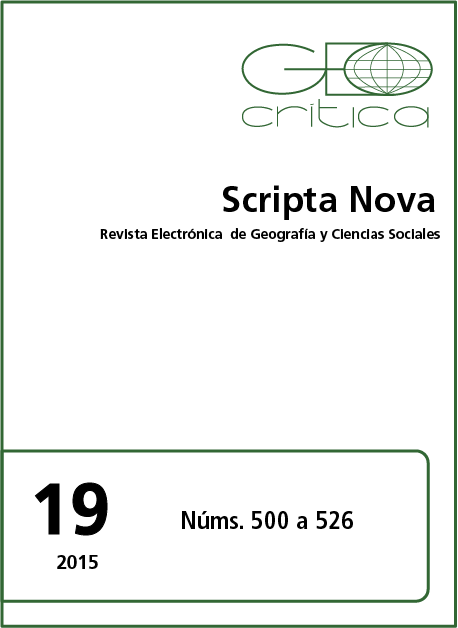El valor histórico y estético del paisaje: claves para entender la vulnerabilidad de la interfaz urbano-forestal frente a los incendios
Palabras clave:
legislación en las IUF, resiliencia, transición forestal, planificación territorialResumen
La crisis de las actividades tradicionales ocurridas a partir de la segunda mitad del siglo XX ha dado lugar a una nueva estructura territorial caracterizada por un incremento de la densidad forestal y una aceleración de la dispersión urbana. Los cambios en los usos y cubiertas del suelo y la transición forestal están en los fundamentos de la explicación de esta transformación. Es precisamente la dispersión de los asentamientos humanos lo que ha generado más interés y preocupación. El objetivo de este trabajo es aportar un marco de referencia teórico que permita entender la vulnerabilidad de los asentamientos en la interfaz urbano-forestal (IUF) y la falta de adaptación de la población en estos entornos, a partir de una reflexión sobre el valor histórico y estético del paisaje. La diagnosis gira entorno a los siguientes ejes temáticos: el valor del paisaje, los cambios en los usos y cubiertas del suelo y la teoría de la transición forestal, la dispersión urbana y los incendios en la IUF, y la legislación actual.Descargas
Número
Sección
Artículos
Licencia
Los autores que publican en esta revista están de acuerdo con los siguientes términos:
- Los autores conservan los derechos de autoría y otorgan a la revista el derecho de primera publicación, cin la obra disponible simultáneamente bajo una Licéncia de Atribución Compartir igual de Creative Commons que permite compartir la obra con terceros, siempre que estos reconozcan la autoría y la publicación inicial en esta revista.
- Los autores son libres de realizar acuerdos contractuales adicionales independientes para la distribución no exclusiva de la versió de la obra publicada en la revista (com por ejemplo la publicación en un repositorio institucional o en un libro), siempre que se reconozca la publicación inicial en esta revista.





